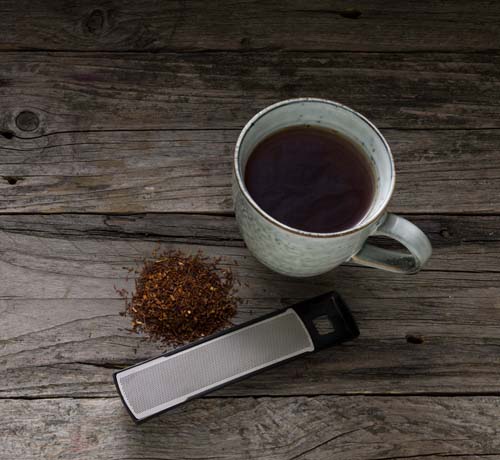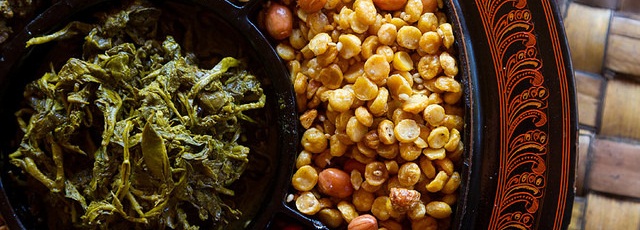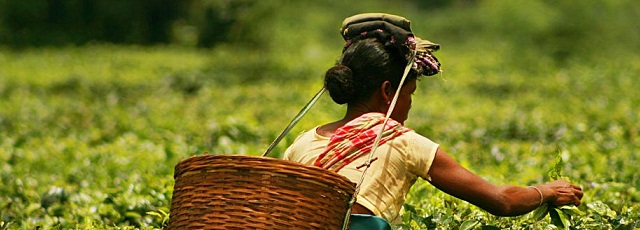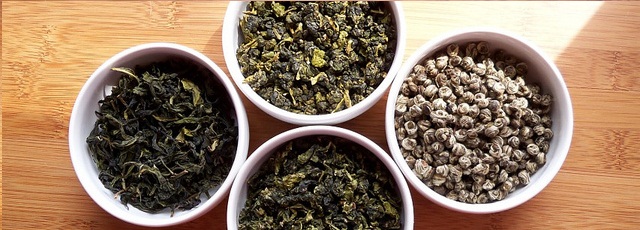If they don’t drink vodka, the Russians consume tea and in great quantities – it’s their country’s hallmark tradition. They do this at any time of the day and with no restrictions. The biggest differences between the way the Russians consume their hot beverage and the way other peoples do are the lemons, the sugar, and the Samovar. The Russian tradition is a lump of sugar to be held in the mouth while sipping from the cup. In good old times and in rich homes during the tea ceremony, main courses were served at least four times. Honey, sweets, sugar, lemon, even muffins – this is just a light breakfast for the Russians. The tea is served with small salty bubliki (a kind of pastry), or sweets. Once upon a time towels were bestowed to the guests besides the tea, because the beverage was always served so hot that the natives were used to steaming. For the Russian Tea Ceremony, you will need also refined tea: Indian, Chinese or Green.
Tea came to Russia from the East. It is well known that for the first time Russians met tea in China and in the beginning of the 17th century, the Russian Tzar Michael Romanov received as a present from the Chinese ambassador several cases of tea, raised in their country.

The Drosselmeyer Tea Infuser. Visit our Shop
The Samovar – The Tea Jewel
The Samovar is a unique creation of the Russian technological genius – and it was mentioned in a written text for the first time in 1746.
For many people, the Samovar is only a Russian invention, even one of the symbols of this huge country. Some experts, however, are arguing which exactly is the homeland of this incredible device for warming up water for a tea ceremony.
They say the Samovar is known since antiquity. In a vessel full of water ancient folks used to throw big, hot stones, which helped the water boil. Later in Europe, similar devices appeared, but with a perfected construction. The manufacture of this unique mechanism for water boiling started during the time of Peter The Great, who saw something similar in the Netherlands. After that, they started producing Samovars in plants. This is how from devices accessible only for the rich aristocracy – they became a part of the lives of more ordinary people. Most Samovars in Russia are made in the town of Tula, south of Moscow and they vary from simple designs to enormous and elaborate ones with precious stones. A Russian idiom coined by Anton Chekhov, which denotes a pointless activity is: “To take one’s own Samovar to Tula.” During the Second World War, many Samovars were melted into bullets by Stalin. It is no surprise that nowadays they are permanently offered in gift and souvenir shops.
More Tea. Tea Every Day.
Since the climate in most of Russia is very cold – especially in winter, people got used to drinking several cups of hot tea a day. For the boiling water to be enough for the entire household, the vessel had to be quiet big. The warmth of the Samovar was enough to warm up an average room in the house. A Russian writer said that while in Europe it is hard to imagine a house without a fireplace, in Russia it is hard to imagine a home without a Samovar. Russian literature often mentions the Samovar, which symbolizes the famous hospitality of the country.
Rumor has it that if for some reason friends or relatives do not speak to each other – they meet for tea to fondly make up. They used the Samovar as a messenger – they actually spoke to it and asked it to deliver the opinion. “Dear Samovar, please tell Luba Ushakova that I believe she speaks with 150 words per minute.” The Samovar is the Russian soul’s best friend. It has got its special place of honor at the table.
In the beginning, the Samovar was made by red copper. Of course, the wealthy people ordered devices from silver and even from gold. The Samovar’s size can vary from 3 liters to 30 liters for the big Samovars. Tea from a samovar allegedly tastes better than tea in an electric kettle. The Samovar tea smells of fresh wood, smoke and pine cones and it is traditionally filled with water from the well.
How To Serve Russian Tea
On the table next to the samovar there are a few teapots placed one above the other to preserve the heat. They contain tea concentrate, which the guests pour into their cups and then mix it with hot water from the Samovar. In the middle teapot is the black tea; the smallest one, which is on the top contains herbal or mint tea and the big kettle in the base contains hot water. Thus prepared the tea is extremely strong, therefore it has to be attenuated with water. In this way, everyone can pour or combine their tea however they wish. Sugar, honey, lemon or jam can be added for flavor. First, you put in the lemon – then everything else.
Usually, the teapots are decorated with ornaments from the Russian folklore. Some of these kettles are so made, that when placed one above the other – they form the figure of a man or an animal. Russians use small tea-cups with silver handles and silver spoons.
Traditionally, there will be a small plate under each cup, with a beautiful teaspoon on the plate. On additional plates, the hostess offers a variety of tea additions, which can change or underline the taste of the drink, such as brandy, dried fruit, or lemon. Tea is usually served in the open – on the balcony, the terrace, the summer-house or on the bank of the river. According to an ancient tradition, the end of tea drinking occurs when the teacup is placed upside down on its plate. This means that the guest desires no more tea. The most important thing in a Russian tea ceremony is to invite only those who are pleasant for communication and will make the household merry.
Image Copyright: Shou-Hui Wang, License: CC BY-SA 2.0



